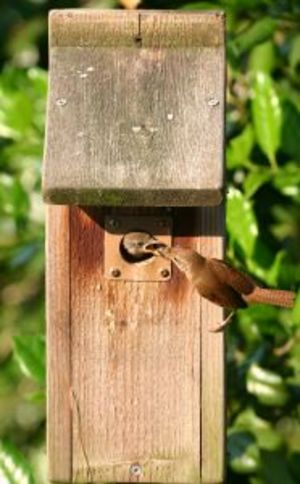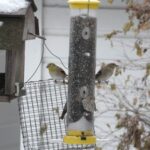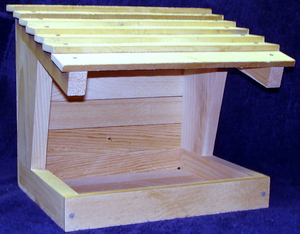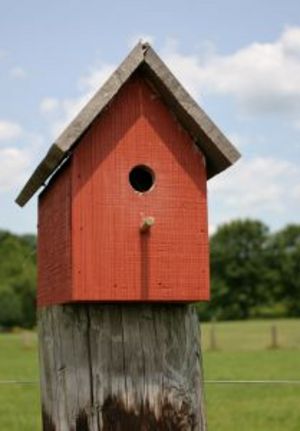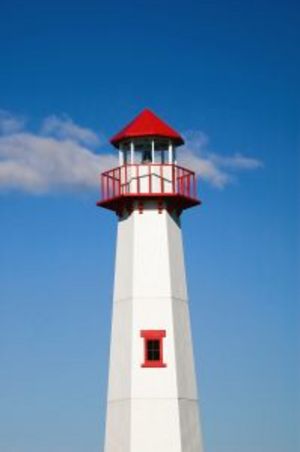Birdhouses are a great way to attract more varieties of birds to nest in the backyard. It can be rewarding for bird lovers to have a pair of birds make use of their birdhouse to raise their babies. As long as the correct birdhouse is used for the birds you want to attract, then there is a good chance it will get occupied by a busy family.
Not all backyard birds use a birdhouse, only those that are called cavity nesters. There are about 30 types of birds for each region of the country that will build nests in a cavity or birdhouse.
Some of the popular birds that will use a birdhouse are bluebirds, house wrens, Carolina wrens, purple martins, chickadees, house sparrows, tree swallows and woodpeckers. If we can get a birdhouse erected in my yard early enough this spring, then possibly the Carolina wrens won’t use the gas barbeque grill as their nesting cavity!
Location:
Selecting the right location for each particular type of bird is important. Each bird species has different requirements and the birdhouse must meet these in order to have a chance of being inhabited.
A bluebird house needs to be in an area near or facing an open field where the insects they eat are plentiful. House wrens prefer their birdhouse to hang from a small tree in an open yard and chickadees need theirs to be in a thicket or group of shrubs and small trees.
Purple martins are the birds that inhabit the apartment style birdhouse often seen in backyards. These birds prefer living in colonies and placing the birdhouses on tall poles in an open area will work best for the purple martin. Most other bird species are more territorial and won’t occupy the birdhouse if it’s near another one.
Size:
The birdhouse also will need to be the right size for the bird with specific dimensions. I used to think birdhouses were all basically the same, but that’s not true. It is partially a common sense approach, but small birds need a small birdhouse.
A chickadee would be happy in a birdhouse about 8 inches tall with a 5 in. by 5 in. base. Bluebirds will need a box a little larger, so 10 inches tall with a 5-1/2 in. by 5- ½ in. base would work. If it is a large bird such as a screech owl, the birdhouse will need to be about 24 inches tall with a base 10 in. by 10 in. wide.
Door:
The door to the birdhouse is an important aspect and needs to be the correct size. If the entrance hole is too large, it will only encourage predators to attack the family.
A birdhouse built for house wrens will require the smallest size entrance hole, only 1-1/8 inches. This will ensure that no other birds compete for it. Just a small difference in the entrance hole really will determine what species of birds can fit in.
Titmice, chickadees, and nuthatches need an entrance hole of 1-1/4 inches and a bluebird’s entrance needs to be a bit larger at 1-1/2 inches.
If it is a screech owl birdhouse, then the opening will need to oval and 4 by 3 inches. The elliptical size door helps keep predators such as raccoons from getting inside the birdhouse.
It is also important to never use a birdhouse with a perch by the door. This only encourages predators or at the least another bird from perching there and harassing the nesting birds.
Height:
Another factor to consider for the birdhouse is the height. Bluebirds and tree swallows need theirs to be about 5 to 8 feet tall on a post. House wrens need the birdhouse to be 6 to 10 feet high and hanging from a tree.
An apartment house colony for purple martins needs to be about 15 to 20 feet above the ground and the screech owl birdhouse can be even higher. The chance of attracting a chickadee to a birdhouse is better if it is placed about 4 to 8 feet above a thicket.
Material:
No matter what type of bird you want to attract, wood is the best choice for a birdhouse. The birdhouse should have drainage holes in the floor so the rain water doesn’t collect and drown the baby birds. There should also be ventilation around the top to let the summer heat escape.
The exterior of a wooden birdhouse can be painted with nontoxic paint or stained in a natural wood color. The exception to this is for the purple martin. The community for the purple martin is often made of aluminum or gourds painted white to reflect heat.
Also remember that a birdhouse that is really intended to house birds will have a way to access the interior to clean it at the end of the seasons. Sometimes one side or the top or bottom will open so the nest remnants can be cleaned out. A birdhouse meant strictly for decorative purposes will not have an accessible interior.
Patience:
No matter how carefully the birdhouse is chosen, there is no guarantee it will be occupied. Patience is needed and sometimes the birdhouse will need to be left up for quite a long while before it’s occupied.
Sometimes the best way to increase the chances of the birds choosing your yard to raise their young is to give them a choice of several birdhouses. For example, the male Carolina wren will build more than one nest every spring and then the female will choose the nest she wants to be their home.
Trial and error are sometimes the best way to find which birdhouses will be chosen. Also remember several bird species will raise more than one set of young each year, and just because they didn’t choose your birdhouse the first time, doesn’t mean they won’t want it the next time. It’s not at all unusual for the parent birds to choose a new location the second time. The first nest may have not had felt safe enough.
If the birdhouse has not been used after a year, then it’s probably best to try a new location. Sometimes the birdhouse will benefit birds during the winter season to escape the cold. Even if it was not used to raise a family, the backyard birdhouse can still benefit our feathered friends.
